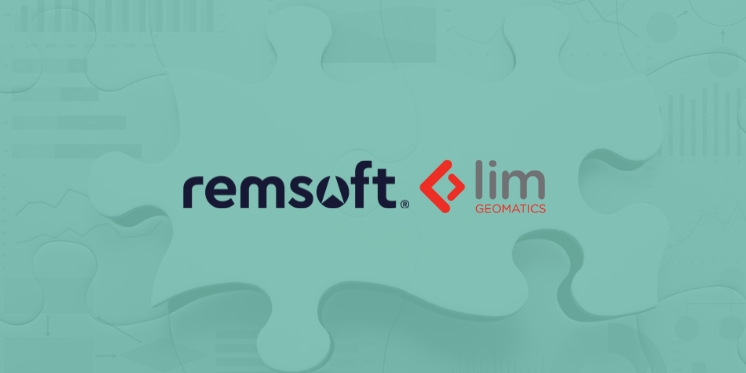Waking up to the news that the local mill is not accepting wood for the next three weeks can throw an operations manager’s morning into chaos. Suddenly, the manager must redirect the wood that was being collected on the dozens of active harvest units in the area to alternative mills. Can the transport contractors cope with the new requirements? Will harvesters be sitting idle? Do the alternate mills have the capacity to handle additional loads? Do we need to adjust the harvest plan? How will this disruption impact delivery timelines?
In the short term, numerous field crews, drivers, contractors, and suppliers are waiting for an answer on how to react to this news. In the longer term, this single disruption might negatively impact deliveries to valuable clients and production targets. An ill-informed decision today could add new bottlenecks elsewhere in the supply chain and lead to lost productivity, missed opportunities, and increased costs in the future.
“It becomes very complex, very quickly,’ says Doug Jones, Senior Vice President, Solutions & Innovation at Remsoft, “These are decisions that cannot be made on the back of an envelope.”
The data challenge
To make the best decision, an operations manager will ideally have all the up-to-date information at their fingertips. In a complex forest supply chain, this includes operational variables such as current harvest and delivery schedules and actuals, information on harvest units, product volume, type and quality, machine availability and harvest rates, mill deliveries and targets, and financial variables, such as transport costs, harvesting costs, and mill prices.
Of course, this data exists, but in many cases, the information is fragmented, stored in individual spreadsheets and any number of business systems. Rarely is the data combined and available in real-time as it comes together from different locations and different internal and external stakeholders in the process.
Fractured systems can prevent managers from seeing the whole picture. According to Ventana Research, four out of five companies (79%) use spreadsheets for their supply chain planning and fewer than half (47%) of companies say their supply chain plans are accurate. While supply chain planning is inherently a dynamic and collaborative process, spreadsheets reinforce silos and less than one-fourth of companies say their supply chain plans are integrated.
Unified view
With so many moving parts in the supply chain,” says Jones, “we’ve heard from customers that having a single source of truth, and being able to see everything in one place, is a game-changer that can drive transformational time and cost efficiencies.”
Cloud-based Remsoft Operations was designed for operators worldwide who were looking for a single application that consolidates and connects all the people, processes, and data sources across the entire supply chain. Rather than manually importing data, spreadsheets, and reports from dozens of different business silos, Remsoft Operations automates and standardizes data integration and delivery.
“What we’ve done is taken away those disparate and disconnected steps and produced one application for managing the forest supply chain in a unified, real-time view,” said Jones.
Data integration is key, and companies have different paths to connect their supply chain data sources in Remsoft Operations, eliminating manual data entry and preventing data entry errors and duplication.
Remsoft Operations has robust API capabilities for bringing in the data. Remsoft has also partnered with Safe Software FME Certified data integration specialists to leverage Safe’s FME technology for automated data integration, importing tabular and spatial data from disparate, disconnected sources.
We’ve developed our application integration capabilities to simplify and automate tasks where possible, making it scalable for companies of all sizes,” says Jones. “Once all the data sources are connected in Remsoft Operations, we’re able to deliver a powerful, near real-time view of the business.”
Forestry, like most global business sectors, is undergoing a digital transformation. As such, it was critical for the application to be cloud-based, explains Jones, because it allows Remsoft Operations to pull in information from other business systems on-premise or other cloud applications. Modern systems are seldom isolated on in-house servers or mainframe computers and can easily “talk to each other” in the cloud. In addition, Remsoft Operations users need only an internet connection to have the entire supply chain at their fingertips.
Powerful optimization
The response to everyday problems that arise in daily forestry operations, such as a sudden temporary mill closure, have downstream impacts in the short and long term. Remsoft’s powerful optimization technology can be leveraged within Remsoft Operations to increase planning agility and precision. Planners can collaborate and evaluate the various scenarios that result from different decisions to help decide on the best path forward.
“Optimization is a huge advantage,” Jones says, “A lot of the value add is coming from that optimization integration. We’re using mathematical optimization as a science to solve complex business problems.”
Optimization provides the ability to analyze numerous scenarios with countless variables quickly. As a forestry supply chain planning tool, prescriptive analytics can assess a range of scenarios and calculate the best outcome, considering both operational and financial variables. The best outcome is one that considers downstream consequences while managing day-to-day operations, such as harvesting, delivery, transport, and inventory. By integrating financial information with wood flow management, margin forecasting is more accurate.
However, Jones also points out that “optimization would not be as valuable if it didn’t get executed upon.”
In the case of a temporary mill closure, the operations manager could use Remsoft Operations to view and analyze the impact of their decision on the harvest and delivery schedules, then quickly share the justification for the decision with relevant stakeholders and management.
By connecting data and analytics in the cloud, Remsoft Operations is able to provide real-time decision support that augments experience with data intelligence,” says Jones. “And, with AI-enabled analytics coming onstream this year, there’s new potential for continuous forest-to-mill improvement through better forest management decisions.”
LEARN MORE:
-
Get an overview of Remsoft Operations capabilities for operational planning and scheduling, and download the datasheet.
-
Read about key drivers and strategies for improving operations efficiency and visibility through digital transformation.




